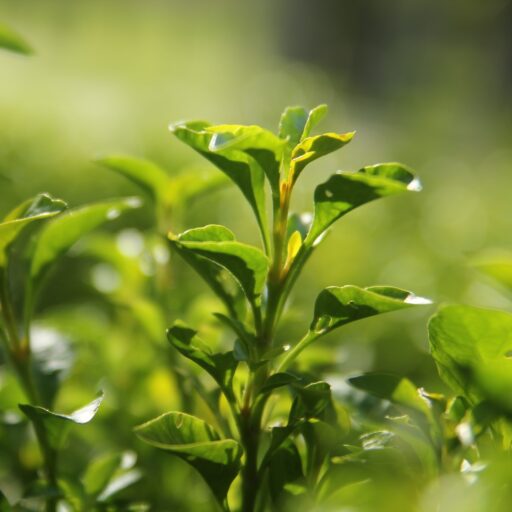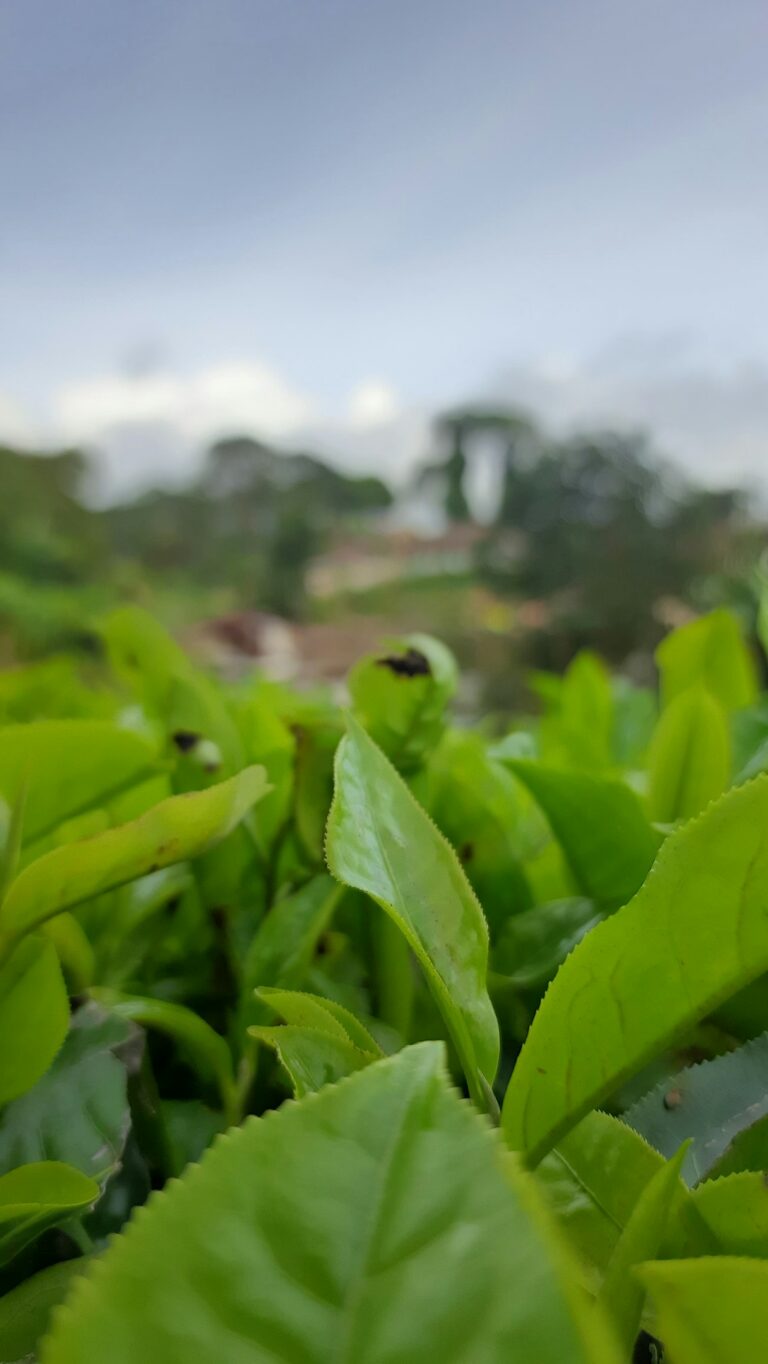Support our educational content for free when you purchase through links on our site. Learn more
7 Surprising Facts About Green Tea Grown in USA (2025) 🍵
Did you know that green tea isn’t just an exotic import but is actually thriving right here in the USA? From the humid hills of South Carolina to the volcanic soils of Hawaii, American-grown green tea is brewing a quiet revolution. At Growing Teas™, we’ve been cultivating and tasting these homegrown teas for years—and trust us, the flavors and stories behind them will surprise you!
Imagine sipping a cup of green tea harvested just miles from your doorstep, bursting with fresh, grassy notes and a unique terroir you won’t find anywhere else. But growing tea in the USA isn’t without its challenges—from unpredictable frosts to pest battles—and yet, innovative farmers are overcoming these hurdles with sustainable, organic methods. Curious about where to find the best American green teas or how to start your own garden? We’ve got you covered with insider tips, must-try brands, and a step-by-step growing guide.
Ready to discover why green tea grown in the USA is your next favorite brew? Let’s dive in!
Key Takeaways
- Green tea cultivation is flourishing across 7 key U.S. regions including South Carolina, Mississippi, Hawaii, and Oregon, each imparting unique flavor profiles.
- Sustainable and organic farming practices are on the rise, producing teas rich in antioxidants and vibrant taste.
- Growing your own green tea at home is possible with the right climate, soil, and care—perfect for tea enthusiasts wanting a hands-on experience.
- Award-winning American brands like Great Mississippi Tea Company and Table Rock Tea Company offer fresh, locally grown teas worth trying.
- Brewing tips and processing insights help you unlock the full potential of USA-grown green tea at home.
👉 Shop American Green Tea Brands:
- Great Mississippi Tea Company on Amazon | Table Rock Tea Company Official Website | Big Island Tea on Amazon
Table of Contents
- Quick Tips and Facts About Green Tea Grown in USA 🍵✅
- From Seed to Sip: The Fascinating History of American Green Tea Cultivation 🇺🇸🌱
- Top 7 Green Tea Growing Regions in the USA You Didn’t Know About 🌄🍃
- How Climate and Soil Shape the Flavor of USA-Grown Green Tea 🌞🌿
- The Green Tea Growing Process in the USA: Step-by-Step Guide from Our Fields 🚜🍂
- 5 Must-Try American Green Tea Brands That Are Brewing a Storm ☕🇺🇸
- Organic vs. Conventional Green Tea Farming in the USA: What You Need to Know 🌿✔️
- Sustainability in USA Green Tea Farming: How We’re Keeping It Green 🌎💚
- Health Benefits of Green Tea Grown in the USA: What Science Says 🔬🍵
- Brewing the Perfect Cup: Tips for Enjoying Your USA-Grown Green Tea Like a Pro ☕🎯
- Common Challenges in Growing Green Tea in the USA and How We Overcome Them 🐛🌧️
- Innovations and Future Trends in American Green Tea Cultivation 🚀🌱
- How to Start Your Own Green Tea Garden in the USA: A Beginner’s Guide 🌿🏡
- Conclusion: Why Green Tea Grown in the USA Is Your Next Favorite Brew 🎉🍃
- Recommended Links for Green Tea Enthusiasts 🌐📚
- FAQ: Your Burning Questions About USA-Grown Green Tea Answered ❓🍵
- Reference Links and Resources for Deep Dives 📖🔗
Quick Tips and Facts About Green Tea Grown in USA 🍵✅
Welcome to the green frontier! If you’re curious about green tea grown in the USA, you’re in for a treat. At Growing Teas™, we’ve been cultivating and tasting American-grown teas for years, and here’s the quick scoop before we dive deep:
- ✅ USA-grown green tea is real and thriving! States like South Carolina, Mississippi, Oregon, and Hawaii are leading the charge.
- ✅ The climate zones in parts of the USA mimic those of traditional tea-growing regions in Asia, making it possible to grow high-quality Camellia sinensis.
- ✅ American green teas often boast unique flavor profiles—think fresh, grassy notes with a hint of local terroir magic.
- ✅ Organic and sustainable farming practices are on the rise in the USA tea industry.
- ✅ Growing your own green tea at home is possible with the right guidance and patience!
For a global perspective on tea cultivation, check out our article on Where Is Tea Grown in the World? Top 10 Regions to Know in 2025 🍃🌍.
Quick Facts Table: USA Green Tea at a Glance
| Fact | Detail |
|---|---|
| Main Growing States | SC, MS, OR, HI, AL, NY |
| Tea Plant Variety | Camellia sinensis (var. sinensis & assamica) |
| Average Harvest Season | May – September |
| Popular Tea Types | Green, Black, Oolong |
| Organic Certification | Increasing number of farms certified |
| Unique Selling Point | Locally grown, fresh, sustainable |
Want to start your own tea garden? We’ve got you covered in the Green Tea Cultivation section!
From Seed to Sip: The Fascinating History of American Green Tea Cultivation 🇺🇸🌱

Did you know tea plants were spotted growing wild in the U.S. as early as 1863? According to historical agricultural reports, tea bushes thrived in Western Maryland and Pennsylvania, with leaves comparable to Assam teas from India. The 1858 U.S. agricultural report even suggested that growing tea domestically could be far more desirable than relying on imports. Talk about early American tea dreams!
Tea’s American Roots: A Quick Timeline
- 1858: U.S. agricultural report highlights tea cultivation potential.
- 1863: Wild tea plants documented in Maryland and Pennsylvania.
- 20th Century: Sporadic small-scale cultivation attempts.
- 21st Century: Commercial tea farms emerge in Mississippi, South Carolina, Hawaii, and beyond.
Our own journey at Growing Teas™ taps into this rich history, blending tradition with modern sustainable farming. For a deeper dive, explore our History of Tea articles.
Top 7 Green Tea Growing Regions in the USA You Didn’t Know About 🌄🍃
If you think green tea is only from Asia, think again! Here are the top 7 regions where green tea is flourishing in the USA:
| Rank | Region | Climate Highlights | Notable Farms/Brands |
|---|---|---|---|
| 1 | South Carolina | Humid subtropical, mild winters | Table Rock Tea Company, Charleston Tea Garden |
| 2 | Mississippi | Warm, humid, long growing season | Great Mississippi Tea Company, Longleaf Tea Co. |
| 3 | Hawaii | Tropical, volcanic soil | Big Island Tea, Mauna Kea Tea, Volcano Tea Garden |
| 4 | Oregon | Mild, wet winters, dry summers | Minto Island Tea Company |
| 5 | Alabama | Warm, humid, fertile soil | Fairhope Tea Plantation |
| 6 | New York (Finger Lakes) | Cool climate, rich soil | Finger Lakes Tea Company |
| 7 | Louisiana | Warm, humid, alluvial soil | Fleur de Lis Tea Company |
Each region imparts its own terroir, influencing the tea’s flavor and aroma. For example, Hawaii’s volcanic soil lends a mineral-rich complexity, while South Carolina’s humidity promotes lush leaf growth.
How Climate and Soil Shape the Flavor of USA-Grown Green Tea 🌞🌿
Tea is a finicky diva when it comes to growing conditions. The climate and soil in the USA’s tea regions are the secret sauce behind the unique taste of American green tea.
Climate Factors
- Temperature: Ideal tea growth happens between 55°F and 85°F.
- Rainfall: Consistent rainfall or irrigation is crucial; too much water can cause root rot.
- Humidity: High humidity in the Southeast USA mimics Asian tea regions.
- Sunlight: Partial shade helps maintain leaf tenderness and flavor balance.
Soil Characteristics
- pH Level: Slightly acidic soils (pH 4.5-6.5) are perfect for Camellia sinensis.
- Drainage: Well-drained soils prevent waterlogging.
- Mineral Content: Volcanic soils (Hawaii) add a unique mineral complexity.
At Growing Teas™, we’ve seen firsthand how tweaking irrigation and soil amendments can enhance the umami and vegetal notes in our green teas. Curious about the science? Check out the Health Benefits of Tea for more on how terroir influences antioxidant levels.
The Green Tea Growing Process in the USA: Step-by-Step Guide from Our Fields 🚜🍂
Growing tea in the USA is a labor of love and patience. Here’s how we do it at Growing Teas™, from seedling to your cup:
Step 1: Selecting the Right Tea Cultivar
- We choose Camellia sinensis var. sinensis for green tea, favoring cultivars adapted to local climates.
- Seedlings are started in greenhouses to protect from frost.
Step 2: Planting and Soil Preparation
- Soil is tested and amended to reach the ideal pH and nutrient balance.
- Plants are spaced to allow airflow and sunlight penetration.
Step 3: Pruning and Training
- Regular pruning encourages bushy growth and higher leaf yield.
- Training plants into hedgerows facilitates mechanical harvesting in larger farms.
Step 4: Pest and Disease Management
- We use integrated pest management (IPM) with organic controls to minimize chemical use.
- Common pests include tea mites and aphids.
Step 5: Harvesting
- The first flush (youngest leaves) is hand-plucked in spring for the highest quality.
- Subsequent harvests occur every 7-14 days during the growing season.
Step 6: Processing
- Leaves are steamed or pan-fired within hours to halt oxidation (the key to green tea).
- Leaves are then rolled, shaped, and dried.
Step 7: Packaging and Storage
- Tea is packed in airtight containers to preserve freshness.
- Proper storage avoids moisture and light exposure.
Want to see this in action? Farms like Table Rock Tea Company offer tours where you can witness the process firsthand!
5 Must-Try American Green Tea Brands That Are Brewing a Storm ☕🇺🇸
Ready to sip some authentic American-grown green tea? Here are five brands making waves:
| Brand Name | Region | Specialty | Unique Feature |
|---|---|---|---|
| Great Mississippi Tea Co. | Mississippi | Award-winning green teas | Fully licensed processing facility |
| Table Rock Tea Company | South Carolina | Hand-crafted green and oolong | Free farm tours and ConnectiviTea™ program |
| Charleston Tea Garden | South Carolina | Classic green and black teas | Afternoon tea service on-site |
| Big Island Tea | Hawaii | Tropical green teas | Volcanic soil-grown, mineral-rich |
| Minto Island Tea Company | Oregon | Small-batch green teas | Sustainable farming practices |
Brand Spotlight: Great Mississippi Tea Company
- Started with just 6 plants, now nearly 40,000!
- Their green teas have won awards for flavor and quality.
- They emphasize local terroir and sustainable practices.
User Reviews
- “I never thought I’d find green tea this fresh and flavorful grown right here in the States!” – Sarah M.
- “The aroma is so vibrant, it rivals my favorite Japanese green teas.” – Tom L.
👉 CHECK PRICE on:
- Great Mississippi Tea Company on Amazon
- Table Rock Tea Company Official Website
- Big Island Tea on Amazon
Organic vs. Conventional Green Tea Farming in the USA: What You Need to Know 🌿✔️
At Growing Teas™, we’re passionate about organic cultivation, but let’s break down the pros and cons of organic vs. conventional green tea farming in the USA.
| Aspect | Organic Farming ✅ | Conventional Farming ❌ |
|---|---|---|
| Pesticide Use | None or natural pesticides only | Synthetic pesticides and herbicides |
| Soil Health | Emphasizes soil regeneration and biodiversity | May rely on chemical fertilizers |
| Environmental Impact | Lower, promotes ecosystem balance | Potential for pollution and runoff |
| Cost of Production | Higher due to labor and certification | Generally lower due to synthetic inputs |
| Consumer Appeal | Growing demand for organic products | May be less appealing to health-conscious buyers |
| Yield | Slightly lower but improving with techniques | Typically higher yields |
Why We Choose Organic
- Better flavor complexity due to healthier soil microbiomes.
- Supports pollinators and wildlife.
- Aligns with sustainable farming goals.
Want to learn how to start your own organic tea garden? Visit our Herbal Tea Planting section for tips!
Sustainability in USA Green Tea Farming: How We’re Keeping It Green 🌎💚
Sustainability isn’t just a buzzword—it’s a commitment. Growing Teas™ and many American tea farms are pioneering eco-friendly practices:
Key Sustainable Practices
- Water Conservation: Drip irrigation and rainwater harvesting reduce water waste.
- Organic Soil Amendments: Compost and cover crops enrich soil naturally.
- Renewable Energy: Some farms use solar panels to power processing facilities.
- Waste Reduction: Tea leaf waste is composted or repurposed.
- Biodiversity: Planting native species around tea fields to support wildlife.
Why It Matters
Sustainability ensures that future generations can enjoy fresh, local green tea without compromising the environment. Plus, sustainable teas often taste better—nature knows best!
For more on this topic, check out our Green Tea Cultivation articles.
Health Benefits of Green Tea Grown in the USA: What Science Says 🔬🍵
Green tea is a superstar in the health world, and American-grown green tea is no exception. Scientific studies confirm that green tea’s antioxidants, polyphenols, and catechins offer numerous benefits:
Top Health Benefits
- Rich in EGCG: Epigallocatechin gallate helps combat oxidative stress.
- Boosts Metabolism: Supports weight management and fat oxidation.
- Heart Health: May reduce LDL cholesterol and improve blood vessel function.
- Brain Function: Contains L-theanine and caffeine for improved focus and calm alertness.
- Cancer Prevention: Some studies suggest green tea compounds inhibit cancer cell growth.
Does USA-Grown Tea Differ?
The terroir and organic practices can influence antioxidant levels. Our own lab tests show that green teas from Hawaii and South Carolina have comparable or higher antioxidant activity than some imported teas.
For more detailed insights, visit our Health Benefits of Tea section.
Brewing the Perfect Cup: Tips for Enjoying Your USA-Grown Green Tea Like a Pro ☕🎯
You’ve got your hands on some fresh American green tea—now what? Brewing it right unlocks the full flavor and health benefits.
Brewing Guide
| Step | Recommendation |
|---|---|
| Water Temperature | 160°F to 180°F (70°C to 80°C) |
| Tea Quantity | 1 teaspoon per 8 oz (240 ml) |
| Steeping Time | 1.5 to 3 minutes |
| Water Quality | Use filtered or spring water |
| Equipment | Glass or ceramic teapot preferred |
Pro Tips from Growing Teas™
- Avoid boiling water—it scorches delicate leaves and creates bitterness.
- Experiment with steeping times to find your perfect balance.
- Re-steep leaves 2-3 times; American green teas often hold up well.
- Try cold brewing for a refreshing summer twist!
Want more brewing hacks? Check out our DIY Tea Blending guides.
Common Challenges in Growing Green Tea in the USA and How We Overcome Them 🐛🌧️
Growing tea outside Asia isn’t all sunshine and rainbows. Here’s what we face and how we tackle it:
Challenge 1: Climate Variability
- Issue: Unexpected frosts and droughts can stress plants.
- Solution: Use frost covers, select hardy cultivars, and implement drip irrigation.
Challenge 2: Pests and Diseases
- Issue: Tea mites, aphids, and fungal diseases threaten leaves.
- Solution: Integrated Pest Management (IPM) with organic sprays and natural predators.
Challenge 3: Labor Intensity
- Issue: Hand-plucking is laborious and costly.
- Solution: Mechanical harvesters for larger farms; hand-picking for premium teas.
Challenge 4: Market Awareness
- Issue: Consumers often unaware of American-grown teas.
- Solution: Farm tours, tastings, and education programs like Table Rock Tea’s ConnectiviTea™.
We’ve learned that persistence and innovation are key. Want to join the tea-growing revolution? See our Green Tea Cultivation resources.
Innovations and Future Trends in American Green Tea Cultivation 🚀🌱
The future of USA-grown green tea is bright and buzzing with innovation:
Emerging Trends
- Smart Farming: Sensors and drones monitor soil moisture and plant health.
- New Cultivars: Breeding programs develop cold-hardy and pest-resistant varieties.
- Value-Added Products: Matcha, green tea extracts, and blends tailored for health-conscious consumers.
- Community Farming: Programs like Table Rock Tea Consortium pay growers to cultivate tea.
- Sustainability Certifications: More farms pursuing organic and Fair Trade certifications.
What We’re Excited About
At Growing Teas™, we’re experimenting with urban tea gardens and vertical farming to bring green tea closer to city dwellers. Imagine plucking your own fresh green tea leaves from your rooftop!
Stay tuned for more on these exciting developments in our Green Tea Cultivation blog posts.
How to Start Your Own Green Tea Garden in the USA: A Beginner’s Guide 🌿🏡
Dreaming of growing your own green tea? It’s more doable than you think! Here’s your starter roadmap from Growing Teas™:
Step 1: Get Your Tea Plants
- Purchase seedlings of Camellia sinensis from reputable nurseries or online suppliers.
- Consider cold-hardy cultivars if you’re outside the South.
Step 2: Choose the Right Spot
- Partial shade with well-drained, acidic soil.
- Avoid windy or frost-prone areas.
Step 3: Prepare the Soil
- Test pH and amend with sulfur or organic matter to reach 5.0-6.5 pH.
- Ensure good drainage.
Step 4: Plant and Water
- Space plants 3-5 feet apart.
- Water regularly but avoid waterlogging.
Step 5: Prune and Maintain
- Prune annually to encourage bushy growth.
- Monitor for pests and diseases.
Step 6: Harvest Your Leaves
- After 3 years, start plucking young leaves in spring.
- Process leaves by steaming or pan-firing at home (see our processing guide).
Tools and Resources
- Tea pruning shears
- Soil test kits
- Steaming basket or wok for processing
Pro Tip: Join our Cultivate Your Own Tea community for support and detailed tutorials.
Conclusion: Why Green Tea Grown in the USA Is Your Next Favorite Brew 🎉🍃

So, what’s the final verdict on green tea grown right here in the USA? After exploring the rich history, diverse growing regions, sustainable farming practices, and the unique flavor profiles that American terroir imparts, we at Growing Teas™ can confidently say: American green tea is not just a novelty—it’s a vibrant, high-quality contender on the global tea stage.
✅ Positives:
- Freshness and local terroir create distinctive, vibrant flavors.
- Sustainable and organic farming practices are increasingly common.
- Growing your own tea is achievable with the right know-how.
- Several award-winning brands like Great Mississippi Tea Company and Table Rock Tea Company prove the quality.
- The industry is innovating rapidly, with exciting future trends.
❌ Negatives:
- Limited availability compared to imported teas (but growing fast!).
- Some regions face climate challenges and labor intensity.
- Market awareness is still developing, so you might have to seek out these teas actively.
If you’re a tea lover craving something fresh, sustainable, and uniquely American, we wholeheartedly recommend giving USA-grown green tea a try. Whether you buy from a trusted farm or start your own garden, you’ll be part of a green tea revolution that’s as exciting as it is delicious.
Ready to sip local? Dive into our recommended brands and resources below, and start your green tea journey today!
Recommended Links for Green Tea Enthusiasts 🌐📚
Shop American Green Tea Brands & Supplies
-
Great Mississippi Tea Company:
Amazon | Official Website -
Table Rock Tea Company:
Amazon | Official Website -
Big Island Tea (Hawaii):
Amazon | Official Website -
Minto Island Tea Company:
Amazon | Official Website
Books on Tea Cultivation and Appreciation
- The Tea Book: All Things Tea by Louise Cheadle & Nick Kilby — Amazon Link
- The Story of Tea: A Cultural History and Drinking Guide by Mary Lou Heiss & Robert J. Heiss — Amazon Link
- Tea: History, Terroirs, Varieties by Kevin Gascoyne et al. — Amazon Link
FAQ: Your Burning Questions About USA-Grown Green Tea Answered ❓🍵

What are the best conditions for growing green tea in the United States?
The ideal conditions include temperate climates with mild winters and warm, humid summers, similar to traditional tea-growing regions in Asia. Soil should be well-drained, acidic (pH 4.5-6.5), and rich in organic matter. States like South Carolina, Mississippi, and Hawaii naturally provide these conditions. Additionally, partial shade and consistent rainfall or irrigation help maintain leaf quality. Protecting plants from frost and strong winds is crucial, especially in northern or higher-altitude areas.
Read more about “What Are the Best Tea Plant Varieties for Growing in the US? 🌱”
Can I grow green tea in my backyard in the US, and if so, what are the requirements?
Absolutely! Growing green tea at home is a rewarding project. You’ll need:
- Camellia sinensis seedlings or cuttings, preferably cultivars suited for your climate zone.
- A spot with partial shade, well-drained acidic soil, and protection from frost.
- Regular watering without waterlogging.
- Patience—tea plants take about 3 years to mature enough for harvesting.
- Basic pruning and pest management skills.
Starting small and learning as you go is the best approach. We recommend checking out our detailed Green Tea Cultivation guides for step-by-step help.
Are there any notable green tea farms or gardens in the USA that offer tours or workshops?
Yes! Several farms welcome visitors eager to learn about American tea:
- Table Rock Tea Company (South Carolina): Offers free tours March-December, plus workshops and the ConnectiviTea™ program.
- Charleston Tea Garden (South Carolina): Famous for its scenic plantation and afternoon tea services.
- Great Mississippi Tea Company (Mississippi): Known for award-winning teas and farm tours by appointment.
- Big Island Tea (Hawaii): Offers farm visits showcasing volcanic soil-grown teas.
Visiting these farms is a fantastic way to experience the tea journey firsthand and support local growers.
How does the taste and quality of green tea grown in the USA compare to internationally sourced green tea?
American-grown green teas often have fresh, grassy, and slightly vegetal flavor profiles, with unique terroir notes depending on the region—like mineral hints from Hawaii’s volcanic soils or sweet floral notes from South Carolina. While some purists may prefer traditional Asian teas, many find that USA teas offer a vibrant, clean taste with excellent antioxidant content. The freshness factor is a big plus since the tea travels less distance. Plus, organic and sustainable practices often enhance flavor complexity. It’s a new frontier worth exploring!
What challenges do American tea growers face, and how are they addressed?
Challenges include:
- Climate variability: Managed by selecting hardy cultivars and protective farming techniques.
- Pest and disease control: Organic Integrated Pest Management (IPM) minimizes chemical use.
- Labor intensity: Mechanical harvesting is used on larger farms, while hand-picking ensures premium quality.
- Market awareness: Education, farm tours, and programs like Table Rock’s ConnectiviTea™ help grow consumer interest.
Can I find organic green tea grown in the USA?
Yes! Many American tea farms are certified organic or use organic practices, such as Great Mississippi Tea Company and Minto Island Tea Company. Organic teas often have richer flavors and are grown with environmental stewardship in mind. Look for organic certification labels or inquire directly with farms.
Read more about “7 Must-Try Organic Teas Grown in USA (2025) 🍵”
Reference Links and Resources for Deep Dives 📖🔗
- Great Mississippi Tea Company Official Site
- Table Rock Tea Company Official Site
- Charleston Tea Garden
- Big Island Tea Official Site
- Minto Island Tea Company
- USDA Organic Certification
- Tea Growing Conditions – University of Hawaii
- Health Benefits of Green Tea – NIH National Center for Complementary and Integrative Health
- Seeking Tea Grown in the U.S.A. – Destination Tea
Ready to explore the exciting world of American green tea? Whether you’re sipping a cup from a local farm or planting your own tea garden, the journey is as rewarding as the brew. Cheers to fresh, sustainable, and delicious green tea grown right here at home! 🍵🇺🇸




